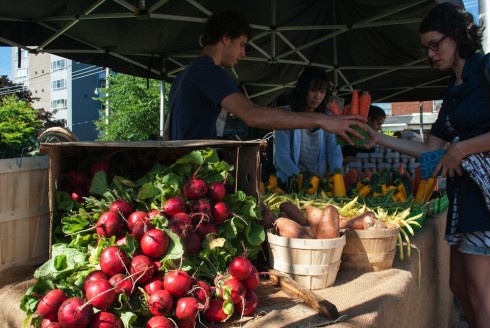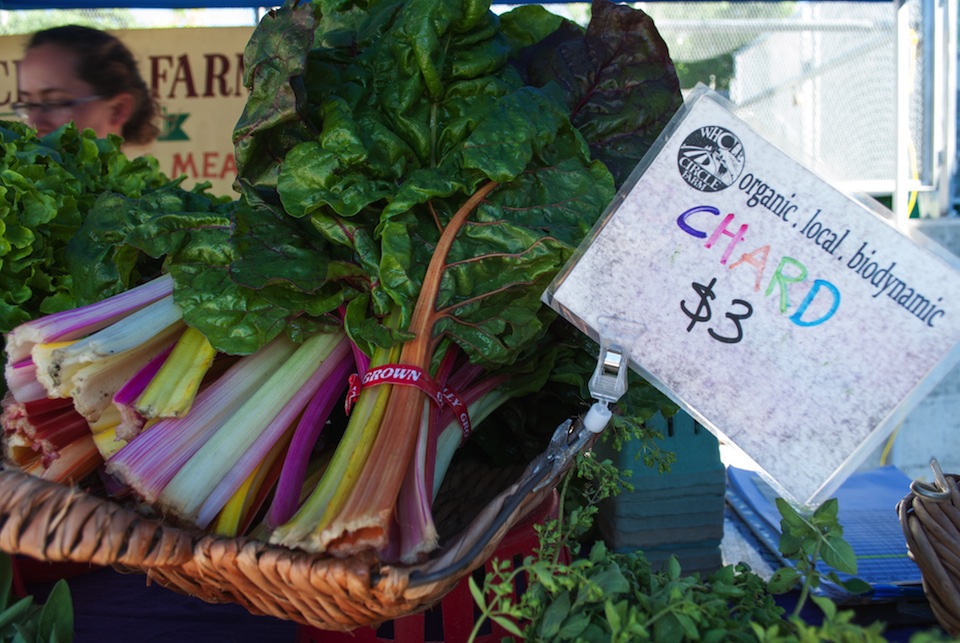
Foodies seem to be everywhere these days, and being one seems to be more common than ever. And while we’re all inclined to scarf down the bacon hotdog gravy chicken nugget igloo that they build on epic meal time, its important that we don’t lose sight of what food really is, where it comes from, and what role it plays in our lives.
Being a foodie is all good fun, but that should mean being food conscious and aware, not just spending lots of money on a fancy meal or venturing into extreme grease territory aka double down land for our next tweet. So while everyone else is instagramming their last snack (cereal- no filter) let’s take some time to understand a couple fundamentals of food production and labeling. It’s time for the talk; It’s time to discuss why you should always practice safe snacking.
In the age of the Dorito taco shells, some of us have gotten slightly confused as to how food factors into our lives and how it influences our society and culture. Practicing food awareness and safe snacking is a crucial way to help support the best aspects of food culture. Today, let’s discuss food labels, how to understand them and why its important that we take these words into account. By labels, I don’t mean the chart on the back of the package, but words like; local, organic, and farmed, and why this is important.
Organic, local, free-range, farmed, and wild are some of the words we hear attached to many of our favorite snacking items, but many of us don’t know what the words really mean and how they are applied to our lunch. Let’s focus on the two most common, organic and local. Organic is a word we’ve all said many times, we try to buy it, and we like the sound of it- it makes the food sound healthy and ethical.

Organic is a method of food production which attempts to develop farming enterprises which are sustainable and harmonious with the environment. Organic means no pesticides, growth hormones, fertilizers, antibiotics and Genetically Modified Organisms (GMO’s). It’s a method which helps maintain biodiversity and protects the environment. Certified organic is a label placed on food, which adheres to certain principles put forth by food inspection agencies. Although many farms still practice organic, they don’t have the official label. So while all the Becky’s, fresh from their 40$ Yoga class, flock to the organic section at Loblaws to buy the overpriced certified produce, you can have just as much luck finding equally clean products at your local farmers market for half of the price (it just hasn’t been officially certified.)

Local, as it pertains to food, is used to describe that which is cultivated within ones geographic region. Local has become much more prevalent within the restaurant industry as many foodies believe it is a crucial way to purchase food. This is because buying local helps to support the livelihood of local farmers and your local economy. It has less environmental burdens than imported food, and finally, many people believe that it tastes better, as the food is fresher and grown more naturally.
But what do these terms mean to you? An interest in them is crucial if you plan on practicing safe snacking, for a variety of reasons.
First, both terms, but particularly organic, are important for those health conscious, yoga loving, clean living types. Just because you’re vegan, doesn’t necessarily mean that you eat ethically, or healthy. Being food aware is understanding the health risks and benefits of different snacks. Organic food is produced without the harmful hormones and chemicals that other foods often are. And who needs more hormones? We have enough as it is, no? Buying local can help to ensure similar practices, as many Canadian farmers practice more natural farming techniques than those of other countries and we have stricter guidelines on food production.
Another reason is the ethics of the situation. If you like to buy American Apparel clothing for its anti sweatshop policy (either that or the borderline pornographic ad campaigns have peaked your interest) then both organic and local food should tug at your heartstrings. Ethical eating involves supporting farming, in which the farmers are conscious on the effects that farming has on the environment, and are aware of humane ways in which to farm animals. If any of you have ever calculated your ecological footprint then you are aware of what a large contribution that emissions from air travel contributes. Imagine what could be reduced if everyone ate local and there weren’t daily flights to import and export food around the globe?
Finally, Taste counts. Organic and local foods often taste better than other foods. Organic foods lack harmful chemicals and this comes through in the taste. Local foods are fresher and in season. Buying imported strawberries in January never taste as good as those tiny fresh Ontario strawberries in July. And for those on the west-coast, bags of frozen imported fish have nothing on the fresh B.C. sockeye salmon.
Now on the other side of the debate, many will argue that buying local and organic is much more expensive and many can’t afford it. And yes this is true for certain items, particularly meat and fish. However produce can often be cheaper when purchased at markets from local farmers, such as the great deals at Jean Talon in Montreal. There are also many organizations which can help individuals understand to how to eat healthy and sustainably while maintaining a budget. Organizations such as Toronto’s The Stop Community Food Centre strives to increase access to healthy food in a manner which maintains dignity, builds health and community and challenges inequality.
Practising safe snacking means being a real foodie and knowing why it counts. Just because you eat out a lot and chow down on some really dope snacks, while documenting every bite, it doesn’t make you a foodie. Understanding how food fits into our society and culture while maintaining an active interest in the important components of that culture, does. That being said, food of course is meant to be enjoyed and, should be pretension free. Practising safe snacking is enjoying the social, ethical and health benefits of food, while still taking in one of the best pastimes, snacking.
Foodies seem to be everywhere these days, and being one seems to be more common than ever. And while we’re all inclined to scarf down the bacon hotdog gravy chicken nugget igloo that they build on epic meal time, its important that we don’t lose sight of what food really is, where it comes from, and what role it plays in our lives.
Being a foodie is all good fun, but that should mean being food conscious and aware, not just spending lots of money on a fancy meal or venturing into extreme grease territory aka double down land for our next tweet. So while everyone else is instagramming their last snack (cereal- no filter) let’s take some time to understand a couple fundamentals of food production and labeling. It’s time for the talk; It’s time to discuss why you should always practice safe snacking.
In the age of the Dorito taco shells, some of us have gotten slightly confused as to how food factors into our lives and how it influences our society and culture. Practicing food awareness and safe snacking is a crucial way to help support the best aspects of food culture. Today, let’s discuss food labels, how to understand them and why its important that we take these words into account. By labels, I don’t mean the chart on the back of the package, but words like; local, organic, and farmed, and why this is important.
Organic, local, free-range, farmed, and wild are some of the words we hear attached to many of our favorite snacking items, but many of us don’t know what the words really mean and how they are applied to our lunch. Let’s focus on the two most common, organic and local. Organic is a word we’ve all said many times, we try to buy it, and we like the sound of it- it makes the food sound healthy and ethical.

Organic is a method of food production which attempts to develop farming enterprises which are sustainable and harmonious with the environment. Organic means no pesticides, growth hormones, fertilizers, antibiotics and Genetically Modified Organisms (GMO’s). It’s a method which helps maintain biodiversity and protects the environment. Certified organic is a label placed on food, which adheres to certain principles put forth by food inspection agencies. Although many farms still practice organic, they don’t have the official label. So while all the Becky’s, fresh from their 40$ Yoga class, flock to the organic section at Loblaws to buy the overpriced certified produce, you can have just as much luck finding equally clean products at your local farmers market for half of the price (it just hasn’t been officially certified.)

Local, as it pertains to food, is used to describe that which is cultivated within ones geographic region. Local has become much more prevalent within the restaurant industry as many foodies believe it is a crucial way to purchase food. This is because buying local helps to support the livelihood of local farmers and your local economy. It has less environmental burdens than imported food, and finally, many people believe that it tastes better, as the food is fresher and grown more naturally.
But what do these terms mean to you? An interest in them is crucial if you plan on practicing safe snacking, for a variety of reasons.
First, both terms, but particularly organic, are important for those health conscious, yoga loving, clean living types. Just because you’re vegan, doesn’t necessarily mean that you eat ethically, or healthy. Being food aware is understanding the health risks and benefits of different snacks. Organic food is produced without the harmful hormones and chemicals that other foods often are. And who needs more hormones? We have enough as it is, no? Buying local can help to ensure similar practices, as many Canadian farmers practice more natural farming techniques than those of other countries and we have stricter guidelines on food production.
Another reason is the ethics of the situation. If you like to buy American Apparel clothing for its anti sweatshop policy (either that or the borderline pornographic ad campaigns have peaked your interest) then both organic and local food should tug at your heartstrings. Ethical eating involves supporting farming, in which the farmers are conscious on the effects that farming has on the environment, and are aware of humane ways in which to farm animals. If any of you have ever calculated your ecological footprint then you are aware of what a large contribution that emissions from air travel contributes. Imagine what could be reduced if everyone ate local and there weren’t daily flights to import and export food around the globe?
Finally, Taste counts. Organic and local foods often taste better than other foods. Organic foods lack harmful chemicals and this comes through in the taste. Local foods are fresher and in season. Buying imported strawberries in January never taste as good as those tiny fresh Ontario strawberries in July. And for those on the west-coast, bags of frozen imported fish have nothing on the fresh B.C. sockeye salmon.
Now on the other side of the debate, many will argue that buying local and organic is much more expensive and many can’t afford it. And yes this is true for certain items, particularly meat and fish. However produce can often be cheaper when purchased at markets from local farmers, such as the great deals at Jean Talon in Montreal. There are also many organizations which can help individuals understand to how to eat healthy and sustainably while maintaining a budget. Organizations such as Toronto’s The Stop Community Food Centre strives to increase access to healthy food in a manner which maintains dignity, builds health and community and challenges inequality.
Practising safe snacking means being a real foodie and knowing why it counts. Just because you eat out a lot and chow down on some really dope snacks, while documenting every bite, it doesn’t make you a foodie. Understanding how food fits into our society and culture while maintaining an active interest in the important components of that culture, does. That being said, food of course is meant to be enjoyed and, should be pretension free. Practising safe snacking is enjoying the social, ethical and health benefits of food, while still taking in one of the best pastimes, snacking.
